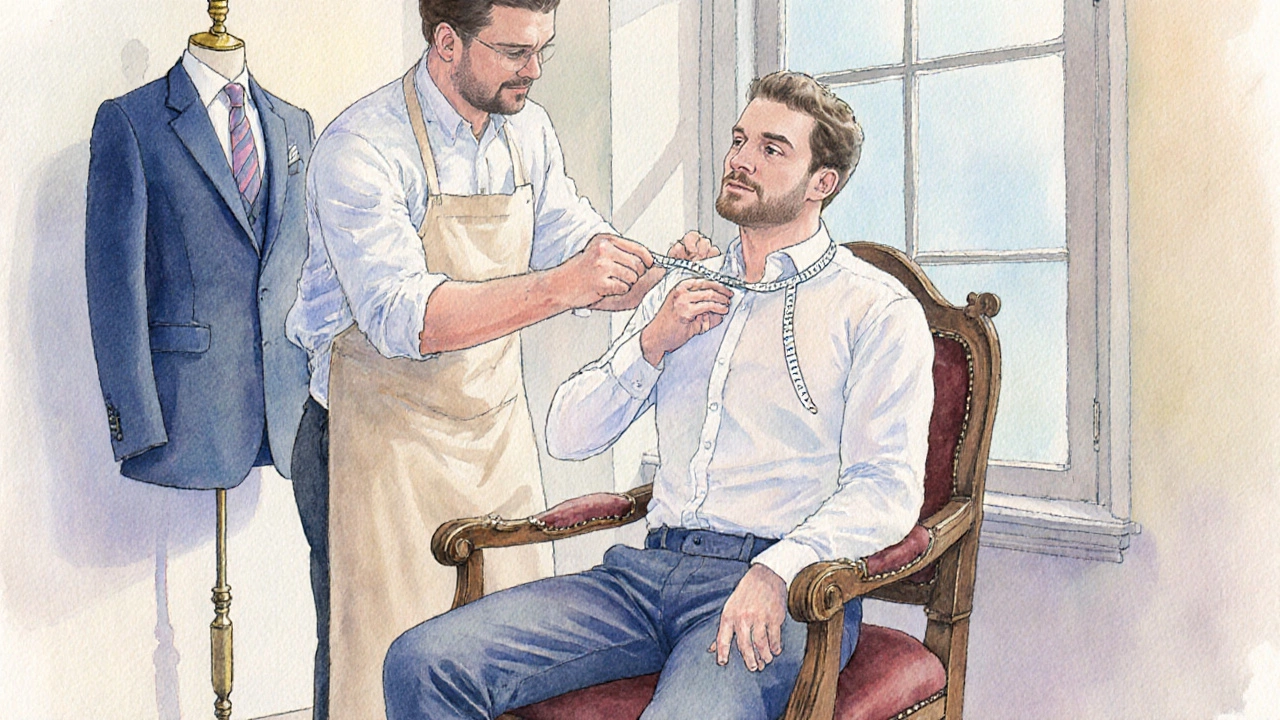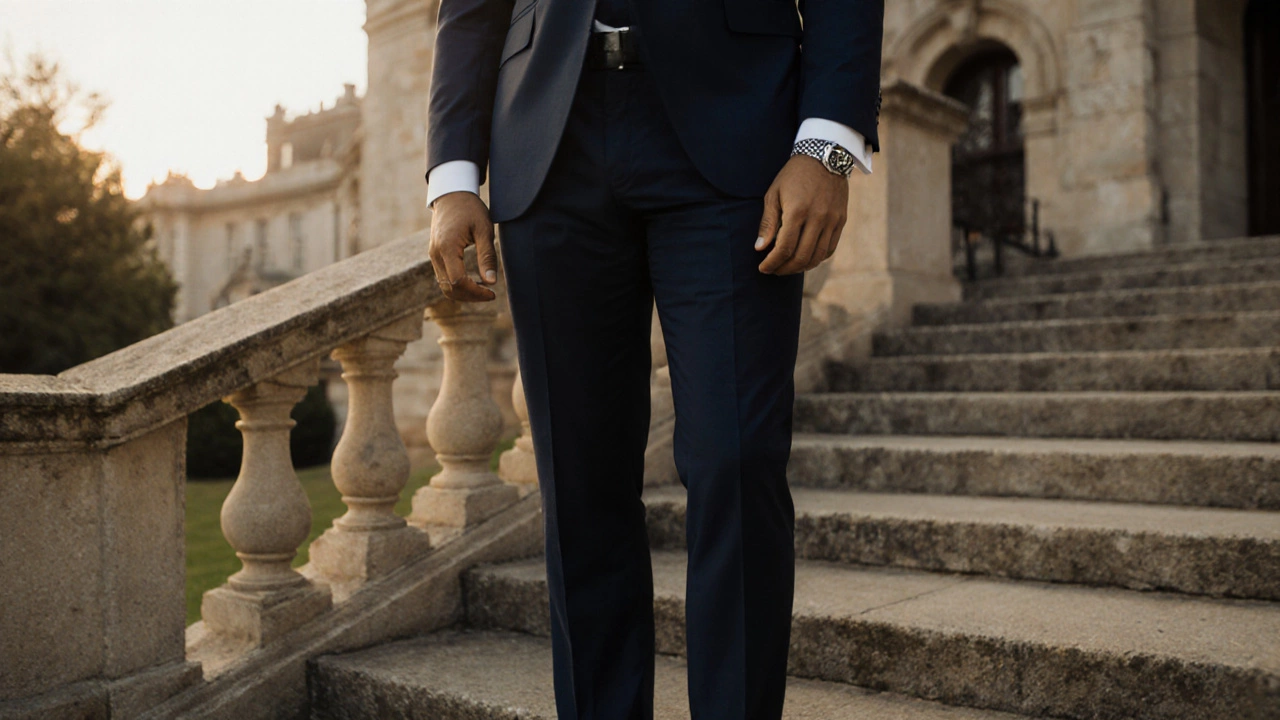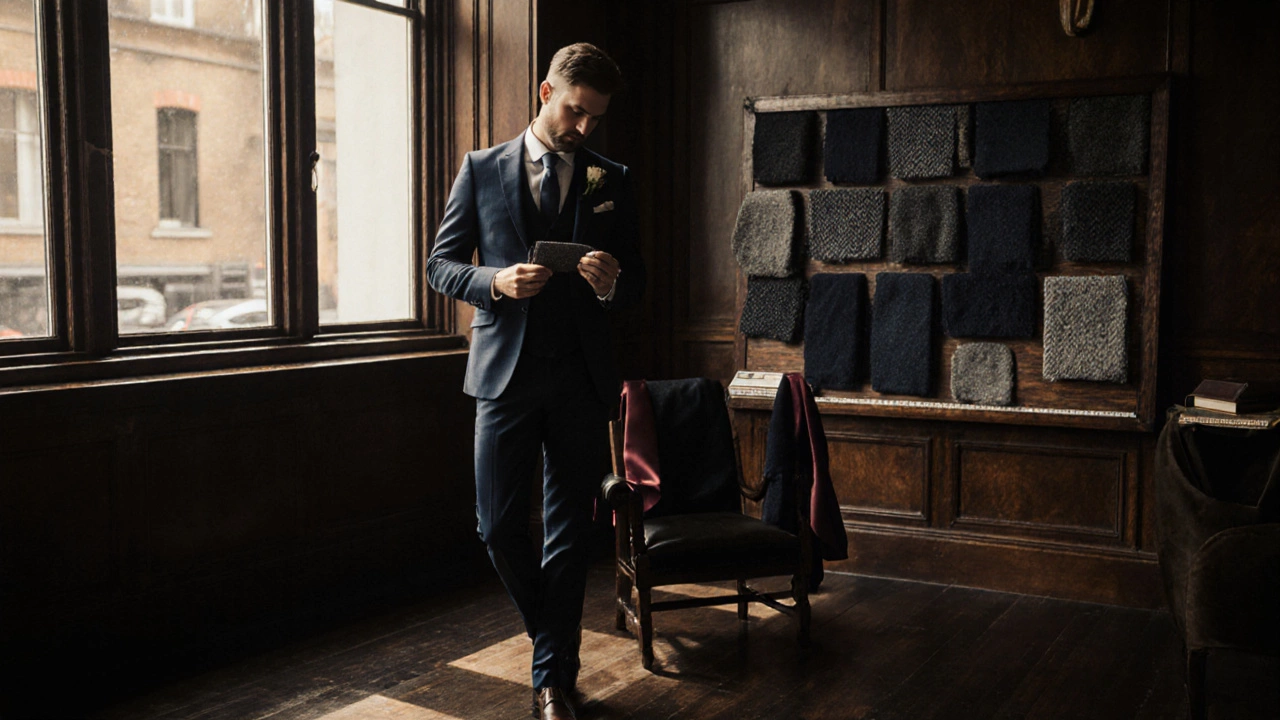Groom Suit Order Timeline Calculator
Calculate Your Suit Timeline
Enter your wedding date and choose your suit type to get personalized ordering deadlines.
Key Deadlines
groom's suit is a formal outfit the groom wears on his wedding day, often reflecting the overall wedding style and personal taste. Figuring out the right moment to place the order can save you from last‑minute stress, extra costs, and a suit that doesn’t fit right.
Key Takeaways
- Start the ordering process 4-6 months before the wedding for a custom suit.
- Make‑to‑measure suits need about 2-3 months; off‑the‑rack can be bought 1-2 months out.
- Schedule the first measurement at least 5 months out, then a final fitting 4 weeks before the ceremony.
- Allocate 2-3 weeks for last‑minute alterations and delivery.
- Keep a checklist of fabrics, accessories, and backup plans.
Why Timing Matters
Every step in the suit journey-from fabric selection to the final button‑up-takes time. If you order too late, you risk rushed alterations, limited fabric choices, or even having to settle for a less‑personal option. A well‑planned groom suit timeline also gives space to coordinate the look with the best man, groomsmen, and the bride’s dress code.

Standard Timeline Overview
- 12-16 weeks before the wedding: Choose suit style and fabric.
- 10-12 weeks before: Book your first measurement session.
- 8-10 weeks before: Place the order (custom or made‑to‑measure).
- 6-8 weeks before: Receive the first sample or ready‑to‑wear suit.
- 4 weeks before: Second fitting for final adjustments.
- 2 weeks before: Pick up the finished suit and schedule any emergency tweaks.
Choosing Between Custom, Made‑to‑Measure, and Off‑the‑Rack
Understanding the three main buying paths helps you set realistic deadlines. Below is a quick side‑by‑side comparison.
| Aspect | Custom Suit | Made‑to‑Measure Suit | Off‑the‑Rack Suit |
|---|---|---|---|
| Fit | Fully bespoke, built from scratch to your measurements. | Adjusted from a base pattern; close to a perfect fit. | Standard sizes; may need minor tailoring. |
| Lead Time | 12-16 weeks. | 6-10 weeks. | 1-2 weeks (store pickup). |
| Cost | High - premium fabrics and labor. | Mid‑range - less labor, still quality fabrics. | Low to mid - mass‑produced fabrics. |
| Design Freedom | Unlimited - lapels, pockets, buttons, lining. | Moderate - select from pre‑set options. | Limited - what’s in stock. |
| Best For | Grooms wanting a signature look and plenty of planning time. | Couples on a tighter budget but still want a tailored feel. | Last‑minute decisions or very tight budgets. |
Measurement & Fitting Tips
Accurate measurements are the foundation of any good suit. Here’s a simple process you can follow:
- Find a reputable tailor who offers a free first fitting.
- Wear a lightweight shirt and trousers similar to what you’ll wear under the suit.
- Measure chest, waist, hips, arm length, shoulder width, and inseam. Write everything down.
- Ask the tailor to record the measurements in a digital file for easy reference.
- Schedule a second fitting 4 weeks before the wedding to confirm that the shoulders sit perfectly and the jacket length aligns with the pants.
When you choose a custom suit, expect the tailor to ask about fabric, lining, and button style. For a made‑to‑measure suit, you’ll usually pick from a curated list of fabrics and have the option to add a monogram.

Common Pitfalls and How to Dodge Them
- Waiting too long. If you push the order past the 8‑week mark for a custom suit, you’ll either pay a rush fee or settle for a less personalized option.
- Skipping the first fitting. Some grooms think the first measurement is just formality. In reality, it catches any body asymmetry early.
- Choosing the wrong fabric. Heavy wool works great in winter but feels oppressive in a summer Auckland wedding. Opt for a tropical wool blend or linen‑wool mix for warm climates.
- Ignoring accessories. Cufflinks, pocket squares, and tie bars should be selected at the same time as the suit to avoid last‑minute mismatches.
- Not budgeting for alterations. Set aside 5‑10% of the suit cost for alterations after the final fitting.
Final Checklist
- Decide on suit style (single‑breasted, double‑breasted, tuxedo).
- Select fabric appropriate for season and venue.
- Book first measurement with a reputable tailor at least 5 months out.
- Place the order according to the timeline for your chosen suit path.
- Schedule second fitting 4 weeks before the wedding.
- Confirm all accessories (shoes, belt, cufflinks) are ordered alongside the suit.
- Allocate time for final alterations and pick‑up 2 weeks before the ceremony.
Frequently Asked Questions
How early should I order a custom groom’s suit?
For a fully bespoke suit, start the process 4-6 months before the wedding. This window covers fabric selection, three measurement rounds, and any unexpected delays.
Can I buy a suit off‑the‑rack just a month before the wedding?
Yes, if you pick a standard size and have a trusted tailor for a quick 1‑week alteration. Just make sure the store has the color and cut you want and that you have a fitting scheduled ASAP.
What’s the difference between made‑to‑measure and custom?
Made‑to‑measure starts from an existing pattern that’s adjusted to your measurements, while custom builds a pattern from scratch. Made‑to‑measure is faster and cheaper but offers slightly less uniqueness.
How many fittings do I need?
At minimum, a first measurement and a final fitting 4 weeks before the ceremony. Some grooms add a mid‑process fitting 2 weeks out for peace of mind.
Should I order a backup suit?
If your budget allows, ordering a second suit in the same fabric (often a lighter weight) can be a lifesaver for unexpected spills or weather changes.

